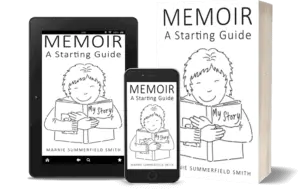
When crafting your memoir, I always encourage my authors to resist the urge to organise their life stories in chapters that summarise events and time periods.
Not that it’s any surprise that you might be thinking this way. After all, every book you’ve ever read, or maybe written, is written in chapters.
I believe it’s best to envision your memoir unfolding through specific, detail-rich scenes that place readers at the heart of individual moments.
Envision being the key word! Because that’s what you want your readers to do, envision and imagine what you went through – for good or ill. You want them to engage their senses. You want them to walk in your shoes, live through your experiences. You want to immerse them.
Actions speak louder than words!
Chapters can easily become dumping grounds for loose details strewn together, but scenes reveal dramatic moments through the lens of a precise place and time. By zeroing in on specific interactions, conversations, sensory impressions, and emotional responses, well-written scenes linger in a reader’s mind long after your memoir is finished.
Scenes bring your stories to life through action, emotion and dialogue. So that’s what you want to focus on writing: action, emotion and dialogue. We want to feel your inner joy or your inner conflict within a narrow dramatic timeframe. We want to see what happened, who said what, where they were and what they were physically and emotionally aware of and sensing.
Approaching your memoir in terms of impactful scenes rather than information-packed chapters will enable more gripping, novelistic storytelling. Your memoir must be true, or emotionally truthful, but it can use the stylistic elements of fiction. Skip the broad summaries; show don’t tell.
This is not to say chapters have no purpose. And I’ll write more about that another time. But my advice to you when writing your memoir is to picture yourself as a film editor with hours of raw footage needing to be pieced together through judicious scene selection.
Choose the scenes that illustrate the point/transformation/argument/theme/takeaway that you’re wanting to express.
How to connect those scenes? With your voice – the most important element of memoir writing!
With narration.
With emotional reflection.
Find those moments burned into memory and render them in close-up. The mosaic of your most affecting memories, when written as immersive scenes, will reveal your life’s story and, crucially, message more profoundly than any sweeping recap ever could.
Read, read and read more memoir to see how others are doing this. Then it’s over to you and your instinctive storytelling abilities, plus lots of practice and if you need it – guidance from me.
Again, think of yourself as a filmmaker and choose the scenes of your life that drive the narrative and your character arc forwards.
Then build your memoir around these vibrant real-life movie clips.
